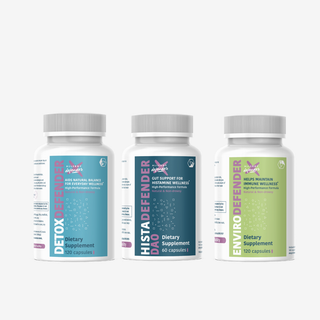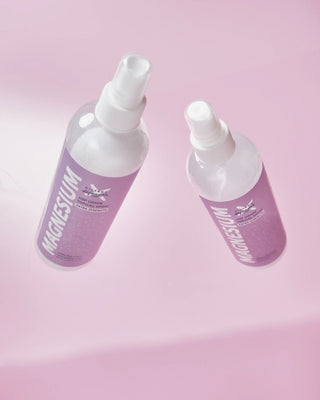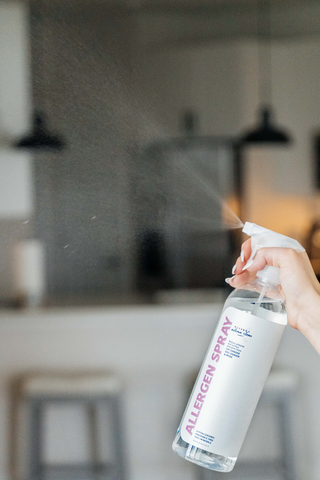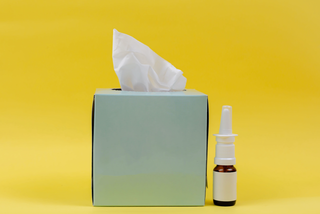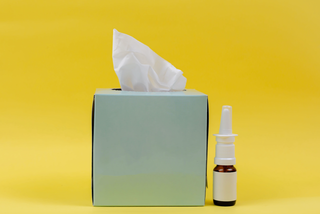Ever feel sluggish or stuffy inside your own home? You might be surprised to learn the culprit could be lurking in the air you breathe. Poor indoor air quality (IAQ) can impact your health and well-being, but the good news is, there are steps you can take to fight back!
When you breathe in polluted air inside your home, it can wreak havoc on your respiratory system. Particles like dust mites and allergens irritate the lining of your nose, throat, and lungs, leading to coughing, sneezing, and congestion. Exposure to volatile organic compounds from cleaning products or even air fresheners can further irritate airways, causing difficulty breathing. More concerning is the long-term impact. Poor IAQ can trigger inflammation in the lungs, making it harder to breathe and worsening existing asthma. This is especially true for our Co-founder, Savanna, who has severe asthma and notices bad air quality is a trigger for her. Chronic exposure might even contribute to the development of serious lung diseases down the road.
Identifying the Enemy Within
Unlike outdoor pollution from factories or traffic, indoor air foes often hide in plain sight. These can include:
- Dust, mites, and allergens: These microscopic irritants love carpets, furniture, and poorly ventilated spaces.
- Volatile Organic Compounds (VOCs): Found in cleaning products, paints, and air fresheners, VOCs can irritate eyes and lungs.
- Mold and mildew: Thriving in damp conditions, these can trigger allergies and respiratory problems.
- Secondhand smoke: Even lingering smoke particles can pose health risks.
Beyond the Usual Suspects: Uncommon Culprits of Bad IAQ
While dust mites and VOCs are common culprits, here are some lesser-known threats to watch out for:
- Combustion Appliances: Gas stoves, fireplaces, and even some space heaters can release harmful byproducts like carbon monoxide and nitrogen dioxide.
- Radon: This naturally occurring radioactive gas can seep into homes through cracks in foundations. It's a leading cause of lung cancer, so testing your home for radon is crucial.
- Building Materials: Older homes might contain asbestos, a hazardous material that can release harmful fibers when disturbed. Lead paint, another legacy of the past, can also pose health risks.
- Poor Ventilation During Home Improvement Projects: Sanding, painting, and applying certain adhesives can release dust and VOCs. Ensure proper ventilation during renovations and wear protective gear like masks.
- Strong Odors: While some air fresheners release harmful VOCs, even seemingly harmless essential oils can irritate some people's respiratory systems. Use natural fragrances with caution, and ensure proper ventilation.
Taking Back Your Indoor Oasis
The good news is, with a few tweaks, you can transform your home into a breath of fresh air:
- Become a Ventilation Vigilante: Open windows whenever possible, especially during dry weather. Consider installing exhaust fans in bathrooms and kitchens to remove pollutants directly.
- Declare War on Dust Bunnies: Vacuum carpets regularly, using a HEPA filter if possible. Dust furniture with damp cloths to trap particles. Wash bedding in hot water to tackle dust mites.
- Choose Green Cleaning Products: Opt for natural cleaning solutions like vinegar and baking soda to minimize VOC exposure. Of course it is always best to open a window when dealing with vinegar.
- Evict Mold and Mildew: Address moisture issues in your home to prevent mold growth. Clean affected areas by hiring a professional mold remediation specialist. Do not use a bleach solution; that will only mask the mold, turning it white. It will not remove the mold.
- Embrace the Power of Plants: Houseplants like ferns and spider plants act as natural air filters, absorbing pollutants and releasing oxygen. Checkout out our article Breathing Easy The Best Houseplants for Improving Indoor Air Quality.
-
Filter Out the Bad Stuff: Try an air purifier with a HEPA filter to capture dust, allergens, and other airborne particles. Remember, to improve the quality of indoor air throughout your house, it would be best to have an air purifier in each room, as air purifiers are rated for specific square feet only.
Try our article Air Purifiers vs Allergen Spray - Use Allergen Spray: It is perfectly designed to tackle airborne and surface allergens to help improve your indoor air quality. It is especially useful if air purifiers are not in the budget.


